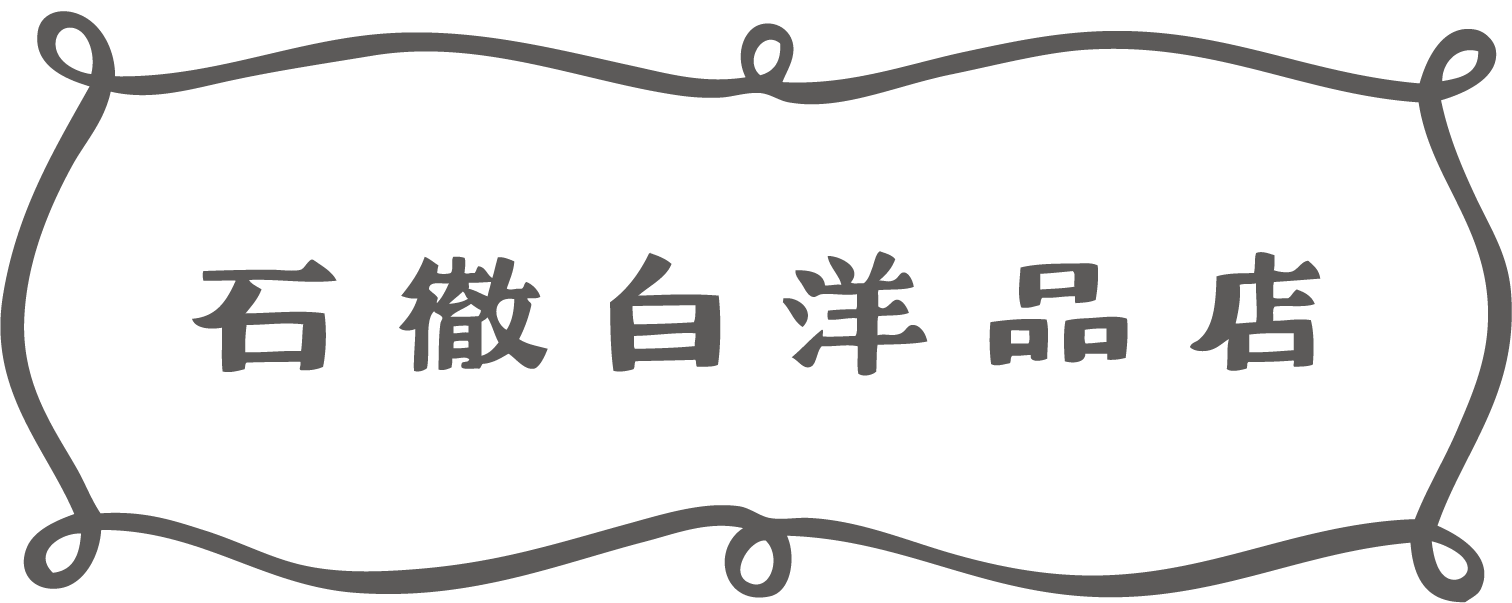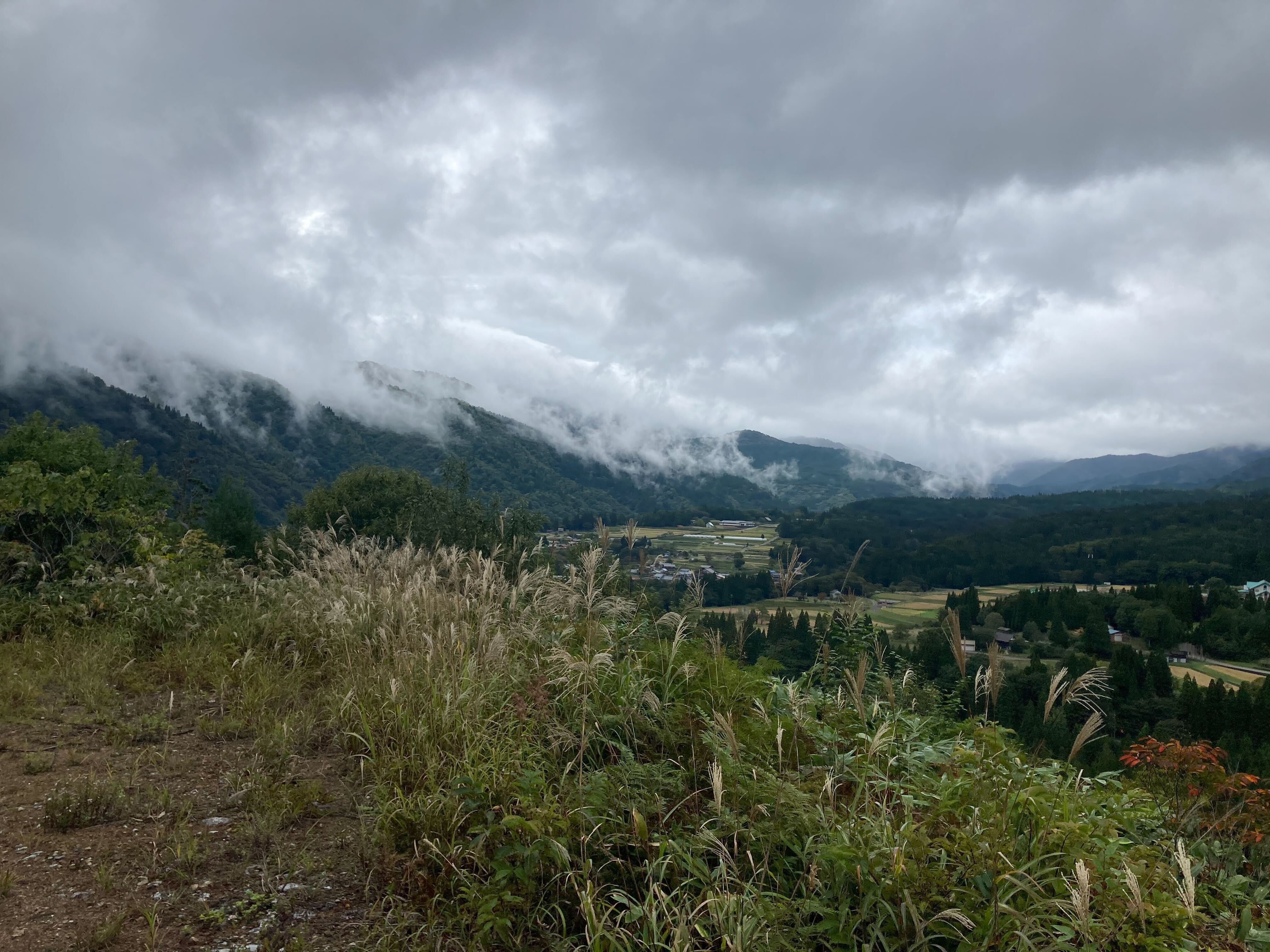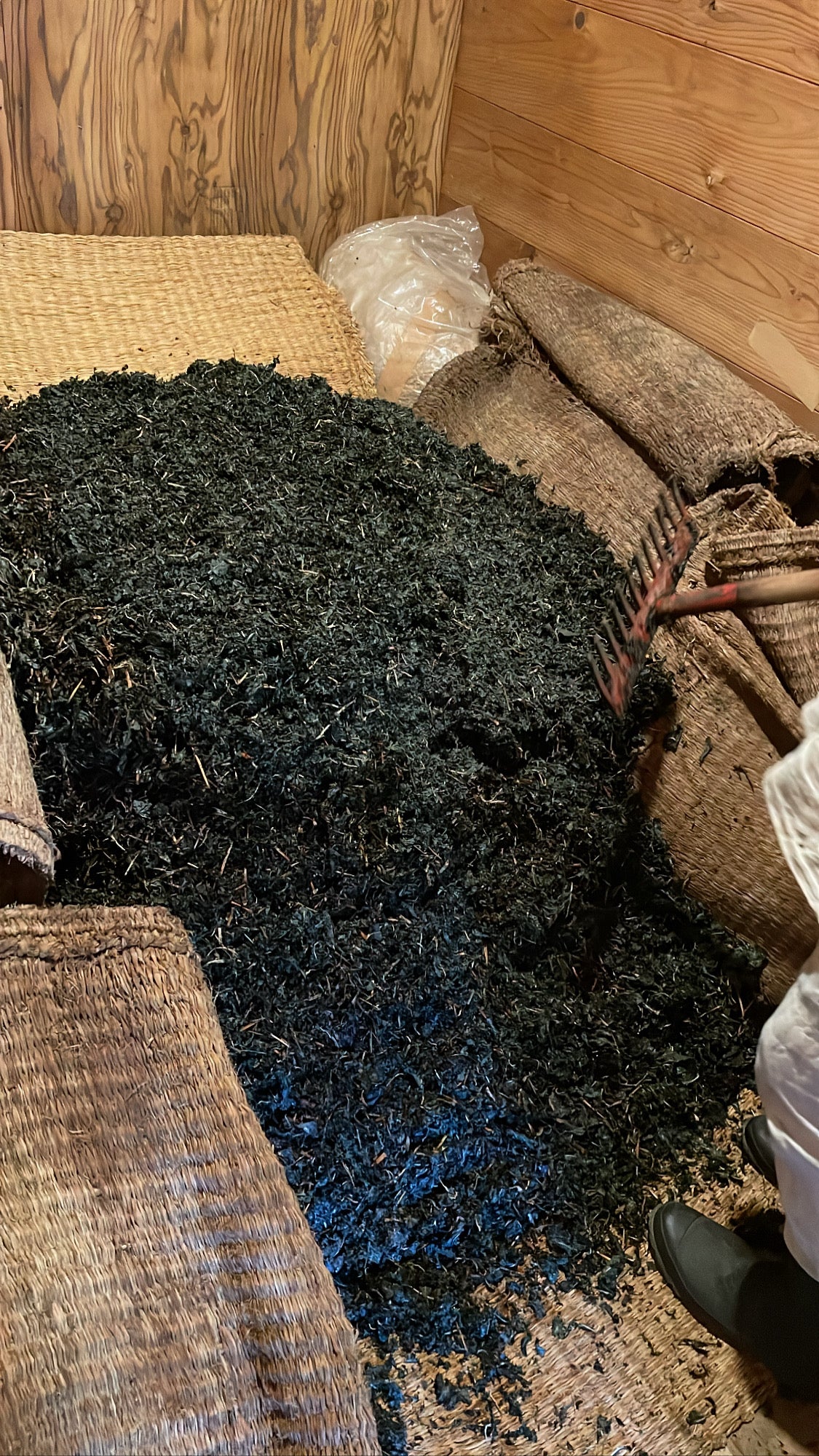After the indigo dyeing is finished, the jars are cleaned.
This year's indigo dyeing was completed safely.
October 1st was the last day for dyeing.
We kept trying to put it off, a little longer, a little longer... but we did everything we could to dye everything we wanted, but in the end, the cold weather stopped most of the colors from coming out, and we were pushed back by the season and had to stop.
As with the cultivation of indigo leaves, our manufacturing is carried out within the workings of nature and at its own pace, so things often do not go as planned.
It's common for things like you planned to dye a lot of clothes today but couldn't because it was raining heavily, or it was so cold that the temperature didn't rise and the color didn't come out as you expected.
That's why the sense of satisfaction on a clear, crisp day when I can dye a lot of fabric is so great, and the joy when the color turns out better than I expected is all the more intense.
Of course there is a sense of urgency that I didn't have when I was working in an office, but more than that, I'm grateful that I can experience a sense of accomplishment and a sense of fulfillment, and that I can truly immerse myself in happiness with my body and mind.
This year, I returned to the indigo dyeing site, so I learned and discovered a lot of new things. When making clothes, the dyeing process is very interesting, and because there is no right answer, I try to make better dyeing by trial and error every day.
It is difficult because it is not as simple as saying "if you do this, it will turn out like this." However, I find it fascinating that we can receive such a wonderful color by making "sukumo" by fermenting the indigo leaves grown in this area.
There are many different phases in life, and many things don't go as planned, but just like the workings of nature, they change and never stay the same every day. While accepting that, I want to do the best I can at each moment.
Cleaning the indigo jars is hard work. After pumping out the top layer of water, the workers use their whole bodies to scoop up the muddy "sukumo" that sinks to the bottom using a bucket, emptying the jar. Next, they fill the jar with water little by little to clean it thoroughly, and then wipe it down.
The muddy material is returned to the fields and used as fertilizer for next year.
Everyone works together on this task in preparation for next year's indigo production.
Although it's work that gets your whole body covered in mud, you are grateful that we were able to receive the indigo color safely again this season, and as you clean up, you will be thinking about next year's indigo dyeing.
The people who first taught me about indigo were so generous in sharing everything they could with me about indigo dyeing, and now I'm beginning to understand why.
This is because it is not easy to continue indigo dyeing. Even if you are taught everything from start to finish, it is not easy to put it into practice and continue doing it. However, this indigo dyeing is a wonderful dyeing method, so it is a job that I would like many people to know about and continue doing.
That's why I think he is so eager to convey everything he can to those who want to do it and are ready to get started.
Six years have passed since I started indigo dyeing. I would like to continue doing it for a long time to come. And if there are people who want to start in the future, I would like to teach them everything I can.
I will never forget to be grateful to those who taught me and to all those who have passed on the techniques of indigo dyeing to me.


